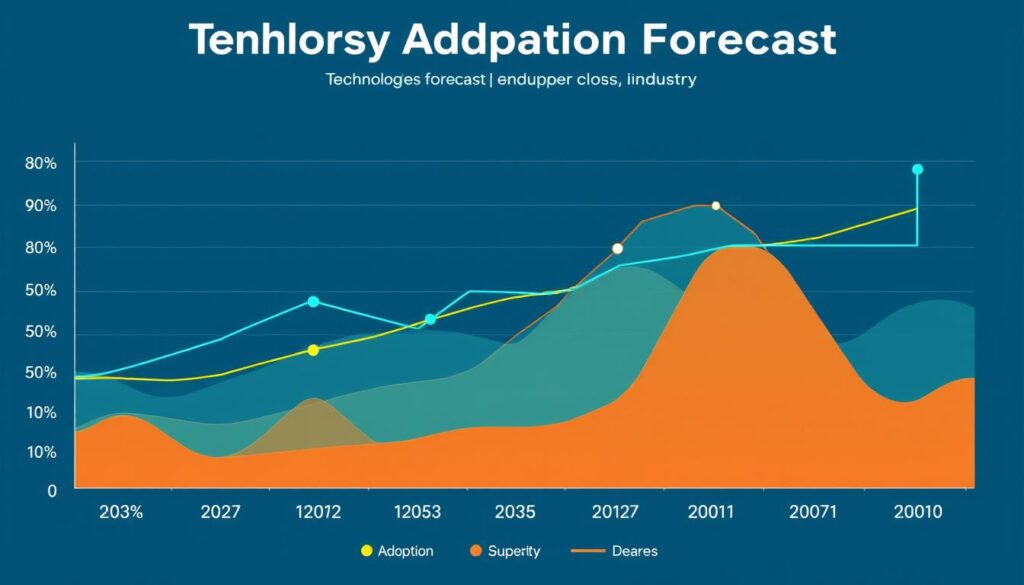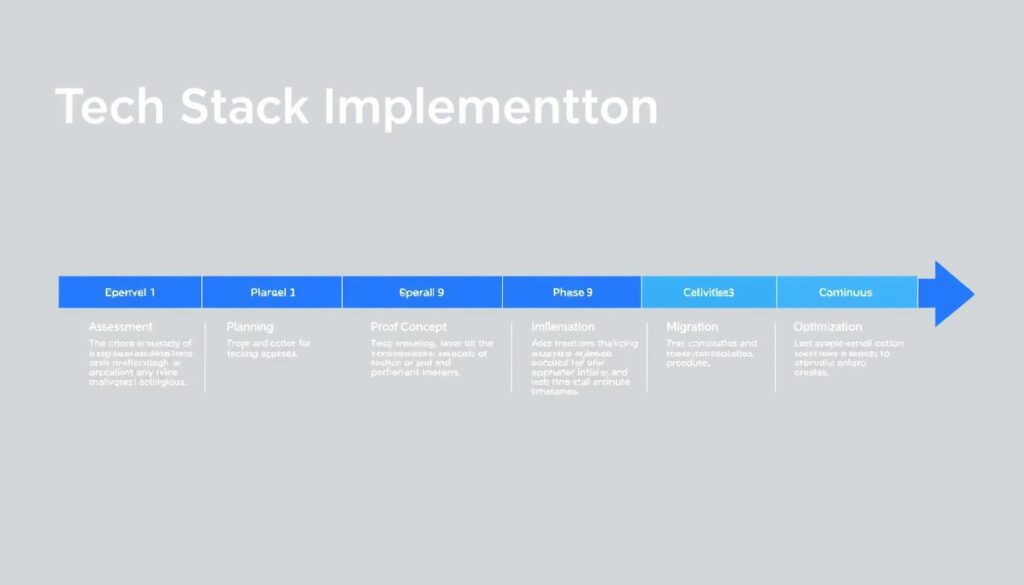Table of Contents
Understanding Tech Stacks in 2025: Beyond the Basics
A tech stack is more than just a collection of technologies—it’s the strategic foundation that determines your organization’s ability to innovate, scale, and respond to market changes. In 2025, the concept of a tech stack has evolved to encompass not only traditional components like programming languages and frameworks but also AI capabilities, security protocols, and compliance frameworks.
Key Components of Modern Tech Stacks
- Frontend technologies (user interfaces, experience layers)
- Backend systems (business logic, APIs, microservices)
- Data storage and management solutions
- AI/ML integration frameworks
- Security and compliance protocols
- DevOps and CI/CD pipelines
- Cloud infrastructure and services
- IoT connectivity frameworks (where applicable)

The Strategic Impact of Tech Stack Decisions
Your technology choices directly influence key business outcomes:
Development Velocity
The right tech stack can accelerate time-to-market by 30-40% through streamlined development processes, robust tooling, and code reusability.
Operational Resilience
Future-proof stacks incorporate redundancy, fault tolerance, and disaster recovery capabilities that reduce downtime by up to 65%.
Innovation Capacity
Modern tech stacks enable rapid experimentation and integration of emerging technologies, increasing innovation output by up to 45%.
Healthcare Industry Tech Stack Recommendations for 2025
The healthcare sector faces unique challenges around patient data security, regulatory compliance, and interoperability. Our recommendations focus on creating secure, compliant systems that enable innovation while protecting sensitive information.
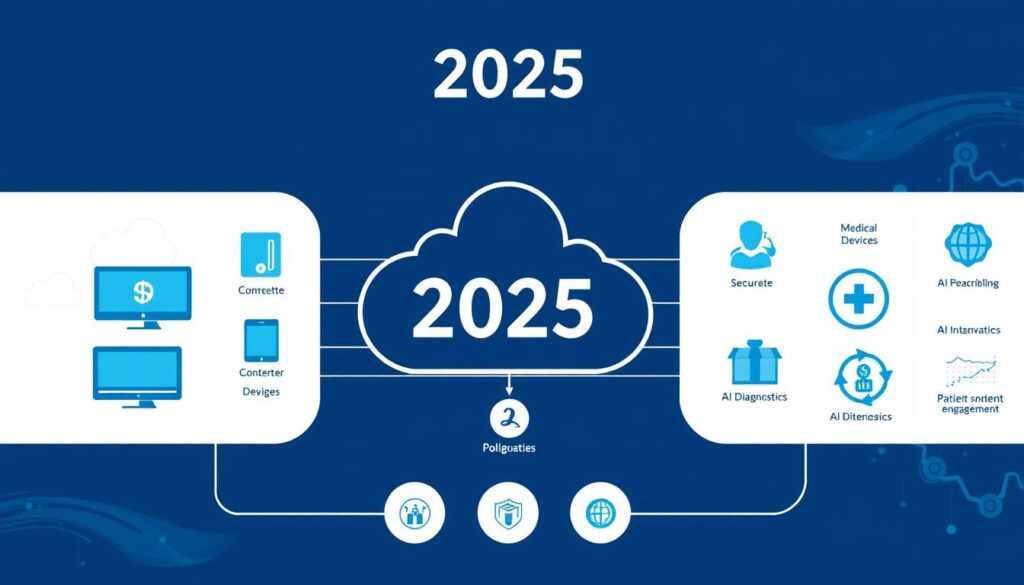
| Component | Recommended Technologies | Key Benefits | Compliance Considerations |
| Cloud Infrastructure | AWS Healthcare, Google Cloud Healthcare API, Azure Health Data Services | HIPAA-compliant data storage, advanced analytics capabilities, global scalability | BAA requirements, data residency controls, encryption standards |
| Data Management | FHIR-compatible databases, MongoDB Atlas for Healthcare, Snowflake Healthcare Data Cloud | Standardized health data exchange, real-time analytics, secure multi-tenant architecture | HIPAA, GDPR, data lineage tracking |
| AI/ML Integration | TensorFlow for Medical Imaging, Healthcare NLP APIs, Azure Health Bot | Diagnostic assistance, predictive analytics, personalized treatment recommendations | FDA software as medical device regulations, explainable AI requirements |
| Security Framework | Zero Trust Architecture, Blockchain for audit trails, Confidential Computing | Granular access control, immutable audit logs, protected data even during processing | HIPAA Security Rule, HITRUST CSF, SOC 2 |
Implementation Considerations for Healthcare
Key Integration Points
- Electronic Health Record (EHR) systems
- Medical device connectivity platforms
- Telehealth infrastructure
- Revenue cycle management systems
- Clinical decision support tools
ROI Metrics
- 30-40% reduction in data retrieval time
- 25% improvement in diagnostic accuracy with AI assistance
- 50% decrease in security incident response time
- 35% reduction in compliance reporting effort
Get Your Healthcare-Specific Implementation Roadmap
Download our detailed implementation guide with vendor comparisons, compliance checklists, and ROI calculators tailored for healthcare organizations.
Fintech Industry Tech Stack Recommendations for 2025
Financial technology demands robust security, real-time processing capabilities, and seamless integration with legacy systems. Our fintech recommendations focus on creating resilient, compliant architectures that enable innovation while maintaining the highest security standards.
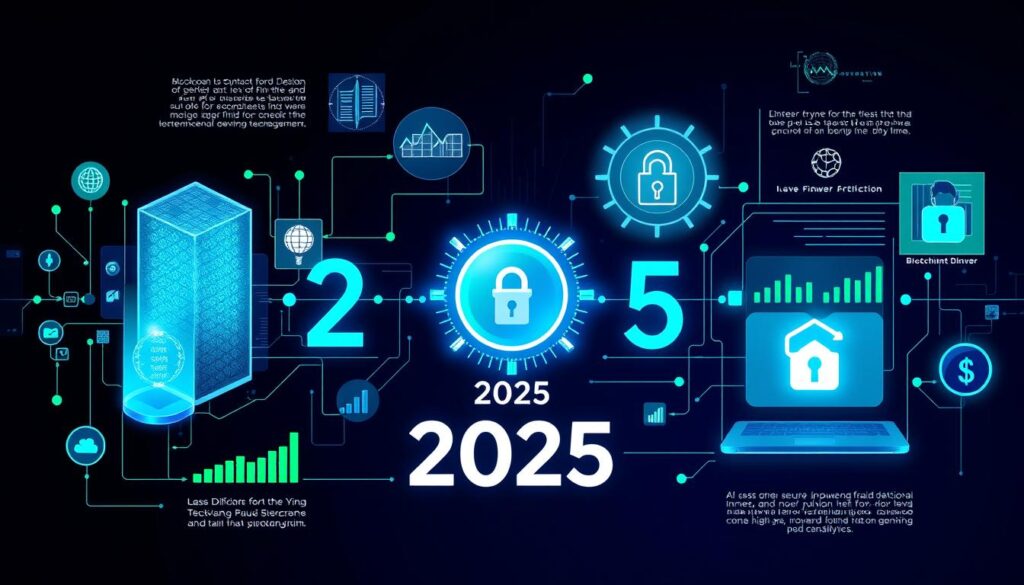
| Component | Recommended Technologies | Key Benefits | Compliance Considerations |
| Transaction Processing | Kafka Streams, Apache Flink, Redis Enterprise | Real-time processing, high throughput, fault tolerance | PCI DSS, SOX, transaction logging requirements |
| Blockchain Integration | Hyperledger Fabric, Corda Enterprise, Ethereum for Business | Immutable transaction records, smart contracts, reduced reconciliation needs | KYC/AML regulations, digital asset regulations |
| Security Framework | Advanced Encryption Standard (AES-256), Quantum-resistant cryptography, Behavioral biometrics | Future-proof security, fraud prevention, seamless authentication | GDPR, CCPA, financial-specific security regulations |
| AI/ML Integration | TensorFlow for fraud detection, PyTorch for risk modeling, H2O.ai for automated ML | Real-time fraud detection, personalized financial insights, automated compliance | Explainable AI requirements, bias testing, model governance |
“By implementing our recommended blockchain-based transaction verification system, Fintech X reduced fraud by 40% while decreasing processing costs by 25% within the first six months.”
Implementation Timeline for Fintech

Access Our Fintech Implementation Framework
Get our detailed guide with security architecture blueprints, compliance checklists, and integration patterns for financial services organizations.
Manufacturing Industry Tech Stack Recommendations for 2025
The manufacturing sector is undergoing digital transformation with Industry 4.0 and smart factory initiatives. Our recommendations focus on IoT integration, real-time analytics, and systems that bridge the gap between operational technology (OT) and information technology (IT).
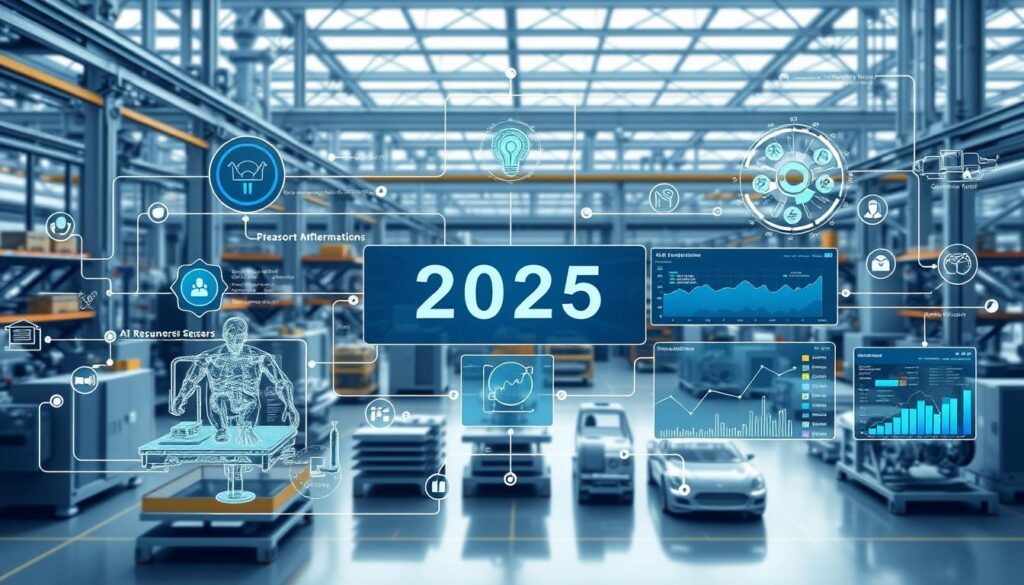
| Component | Recommended Technologies | Key Benefits | Implementation Complexity |
| IoT Platform | AWS IoT Core, Azure IoT Hub, Google Cloud IoT, PTC ThingWorx | Equipment monitoring, predictive maintenance, energy optimization | Medium-High (requires sensor integration) |
| Edge Computing | Azure Stack Edge, AWS Outposts, NVIDIA Jetson for AI | Real-time processing, reduced latency, offline operation capability | Medium (depends on existing infrastructure) |
| Digital Twin Platform | Siemens Mindsphere, GE Predix, Azure Digital Twins | Virtual testing, process optimization, predictive analytics | High (requires detailed modeling) |
| Data Analytics | Databricks Lakehouse, Snowflake Manufacturing Cloud, Tableau Industrial Analytics | Production optimization, quality control, supply chain visibility | Medium (requires data strategy) |
ROI Case Study: Smart Factory Implementation
A leading automotive manufacturer implemented our recommended tech stack for their smart factory initiative, resulting in:
- 37% reduction in unplanned downtime
- 22% improvement in overall equipment effectiveness (OEE)
- 18% decrease in energy consumption
- 45% faster new product introduction cycles
The complete implementation was achieved over 18 months with an ROI breakeven point at month 14.
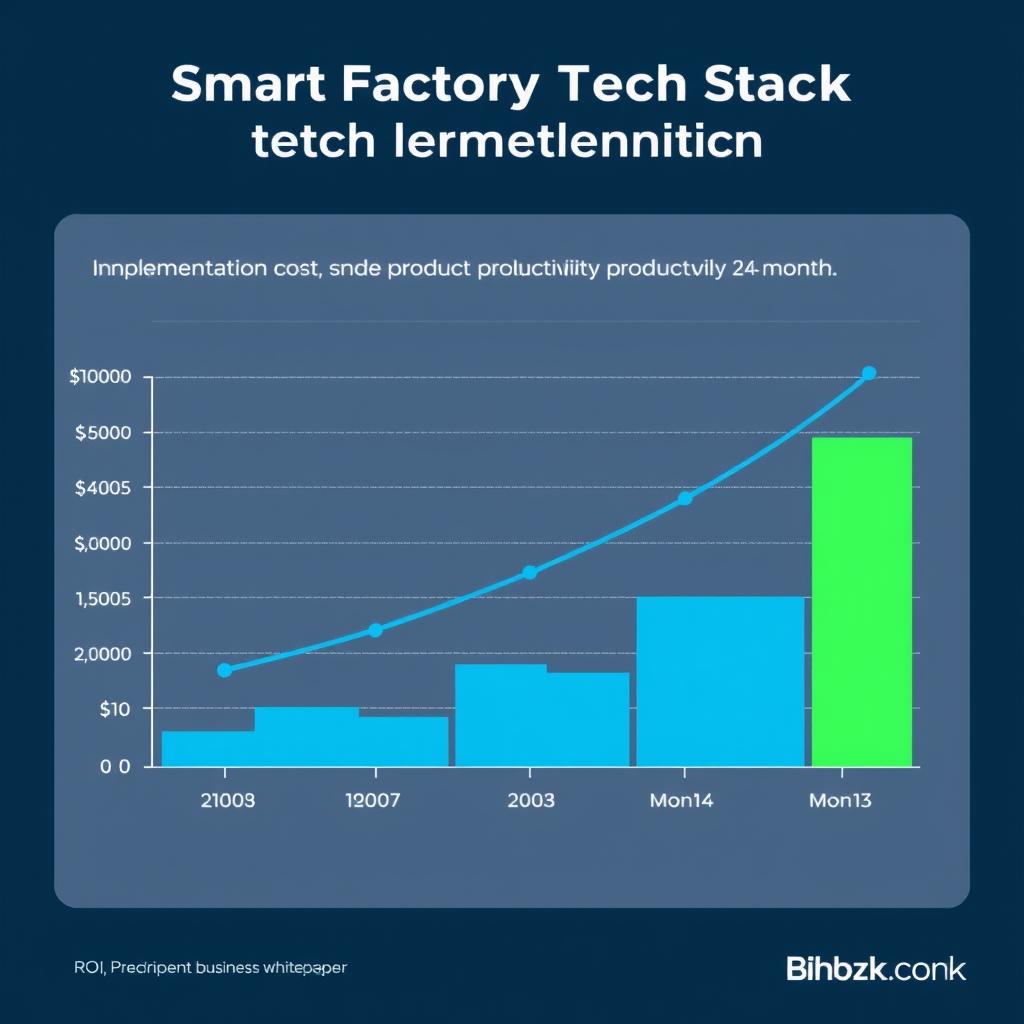
Get Your Manufacturing Tech Stack Blueprint
Download our comprehensive guide with IoT integration patterns, digital twin frameworks, and ROI calculators for manufacturing organizations.
Retail Industry Tech Stack Recommendations for 2025
The retail sector continues to evolve with omnichannel experiences, personalization, and supply chain optimization. Our recommendations focus on creating seamless customer experiences while providing the data insights needed for competitive advantage.
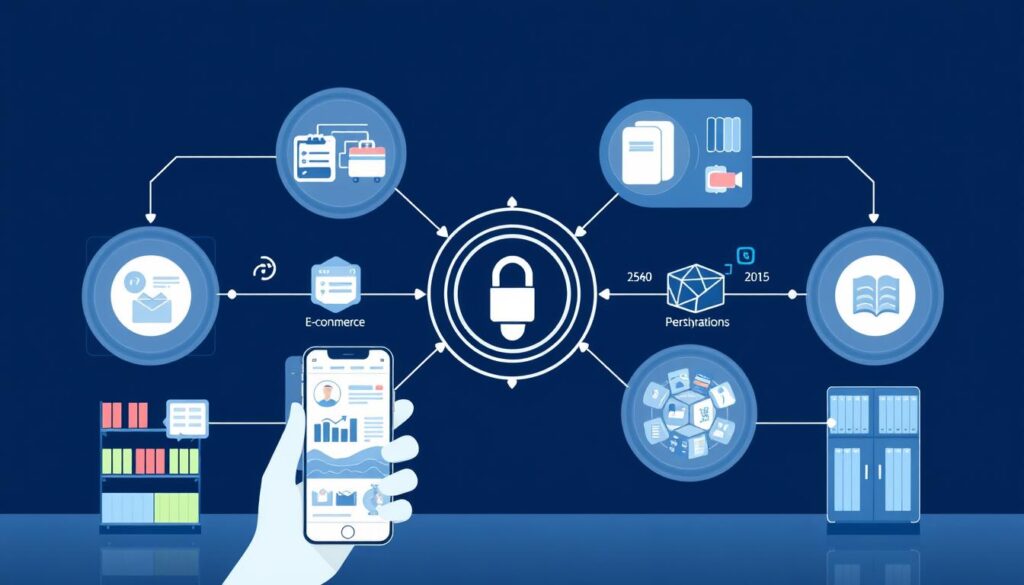
| Component | Recommended Technologies | Key Benefits | Implementation Priority |
| E-commerce Platform | Headless commerce (Commercetools, Elastic Path), Shopify Plus, Adobe Commerce | Omnichannel capabilities, flexible frontend, API-first architecture | High (core revenue driver) |
| Customer Data Platform | Segment, Tealium, Adobe Real-Time CDP | Unified customer profiles, personalization capabilities, privacy compliance | High (enables personalization) |
| Inventory Management | Manhattan Active Inventory, Blue Yonder, Oracle Retail Cloud | Real-time visibility, demand forecasting, reduced stockouts | Medium (operational efficiency) |
| AI/ML Integration | Google Retail Search, Amazon Personalize, Dynamic Yield | Personalized recommendations, search optimization, demand forecasting | Medium-High (revenue impact) |
AI Adoption Timeline for Retail
“After implementing our recommended personalization engine and unified customer data platform, a leading fashion retailer saw a 28% increase in average order value and 32% improvement in customer retention rates.”
Transform Your Retail Technology Strategy
Access our detailed retail tech stack guide with omnichannel architecture patterns, personalization frameworks, and implementation roadmaps.
SaaS Industry Tech Stack Recommendations for 2025
Software-as-a-Service companies require highly scalable, resilient architectures that support rapid iteration and multi-tenant operations. Our recommendations focus on cloud-native technologies that enable continuous delivery while maintaining security and performance.

| Component | Recommended Technologies | Key Benefits | Scalability Impact |
| Application Architecture | Microservices with Kubernetes, Serverless (AWS Lambda, Azure Functions) | Independent scaling, fault isolation, technology flexibility | High (enables horizontal scaling) |
| Database Strategy | Multi-model databases (FaunaDB, CosmosDB), Purpose-built databases (DynamoDB, Elasticsearch) | Optimized for specific workloads, global distribution, multi-tenancy support | High (eliminates database bottlenecks) |
| DevOps Pipeline | GitOps with ArgoCD, GitHub Actions, CircleCI | Automated deployments, infrastructure as code, rapid iteration | Medium (enables rapid scaling of teams) |
| Observability Stack | OpenTelemetry, Datadog, New Relic One | End-to-end visibility, anomaly detection, performance optimization | Medium (enables proactive scaling) |
Implementation Considerations for SaaS
Advantages of Microservices Architecture
- Independent scaling of components
- Technology flexibility per service
- Improved fault isolation
- Enables specialized team ownership
- Facilitates continuous deployment
Challenges to Address
- Increased operational complexity
- Distributed system debugging
- Service discovery and communication
- Consistent monitoring across services
- Data consistency across boundaries
Build Your Future-Proof SaaS Architecture
Get our comprehensive SaaS tech stack guide with architecture patterns, scaling strategies, and multi-tenancy best practices.
Cross-Industry Technology Considerations for 2025
While each industry has specific requirements, several technology trends will impact organizations across all sectors. These cross-cutting concerns should be factored into any tech stack decision.
Cybersecurity Evolution
Zero Trust Architecture (ZTA) will become the standard security model across industries, with identity-based access controls replacing perimeter-based approaches. Quantum-resistant cryptography will move from experimental to production as quantum computing threats materialize.
AI Governance
Regulatory frameworks for AI will mature significantly by 2025, requiring organizations to implement robust governance processes, including bias testing, explainability mechanisms, and audit trails for AI-driven decisions.
Sustainability Metrics
Environmental impact of technology choices will become a key decision factor, with carbon-aware computing, energy-efficient algorithms, and sustainable cloud options gaining prominence in tech stack evaluations.
Comparative Analysis: Cloud Platforms in 2025
| Feature | AWS | Microsoft Azure | Google Cloud |
| Industry-Specific Solutions | Comprehensive offerings across healthcare, financial services, manufacturing | Strong in healthcare, retail, manufacturing with deep Microsoft ecosystem integration | Leading in retail, media, manufacturing with strong AI/ML capabilities |
| Sustainability Features | Carbon Footprint Tool, 100% renewable energy goal by 2025 | Carbon-negative by 2030 commitment, Sustainability Calculator | Carbon-free energy by 2030, Carbon Footprint dashboard |
| AI/ML Capabilities | SageMaker ecosystem, industry-specific AI services | Azure OpenAI Service, domain-specific cognitive services | Vertex AI, industry-leading research models, specialized solutions |
| Hybrid/Multi-Cloud | AWS Outposts, EKS Anywhere, growing multi-cloud support | Azure Arc, Azure Stack, strong hybrid capabilities | Anthos, GKE multi-cloud, open ecosystem approach |
Implementation Roadmap: From Assessment to Optimization
Successfully implementing a new tech stack requires a structured approach that balances innovation with risk management. Our recommended implementation framework provides a clear path from initial assessment to continuous optimization.
Phase 1: Assessment and Strategy (2-4 Weeks)
Key Activities
- Current state architecture assessment
- Business requirements gathering
- Technology landscape evaluation
- Gap analysis and opportunity identification
- Initial ROI modeling and business case development
Deliverables
- Current state architecture documentation
- Future state vision and architecture
- Technology selection criteria
- Preliminary implementation roadmap
- Executive summary and business case
Phase 2: Proof of Concept and Validation (4-8 Weeks)
Key Activities
- Prototype development for critical components
- Performance and scalability testing
- Security and compliance validation
- Integration testing with existing systems
- Refinement of implementation approach
Deliverables
- Functional prototype
- Test results and validation report
- Refined architecture documentation
- Implementation plan with risk mitigation
- Resource requirements and timeline
Phase 3: Implementation and Migration (3-12 Months)
Implementation timelines vary significantly based on organization size, complexity, and approach (big bang vs. phased). Our detailed industry guides provide specific timelines and approaches for each sector.
Cost and ROI Considerations: Organizations implementing our recommended tech stacks typically see ROI breakeven points between 12-24 months, with total cost of ownership reductions of 15-30% compared to legacy systems over a 5-year period. Initial implementation costs are offset by operational efficiencies, reduced maintenance, and new business capabilities.
Conclusion: Preparing for the Technology Landscape of 2025
The technology decisions you make today will determine your organization’s competitive position for years to come. By adopting industry-specific, future-proof tech stacks, you can create the foundation for innovation, efficiency, and growth in an increasingly digital world.
Key Takeaways
- Industry-specific requirements should drive tech stack decisions
- AI integration will be a competitive necessity across all sectors
- Security and compliance must be built into architecture from the start
- Cloud-native, composable architectures provide the greatest flexibility
- Implementation approach is as important as technology selection
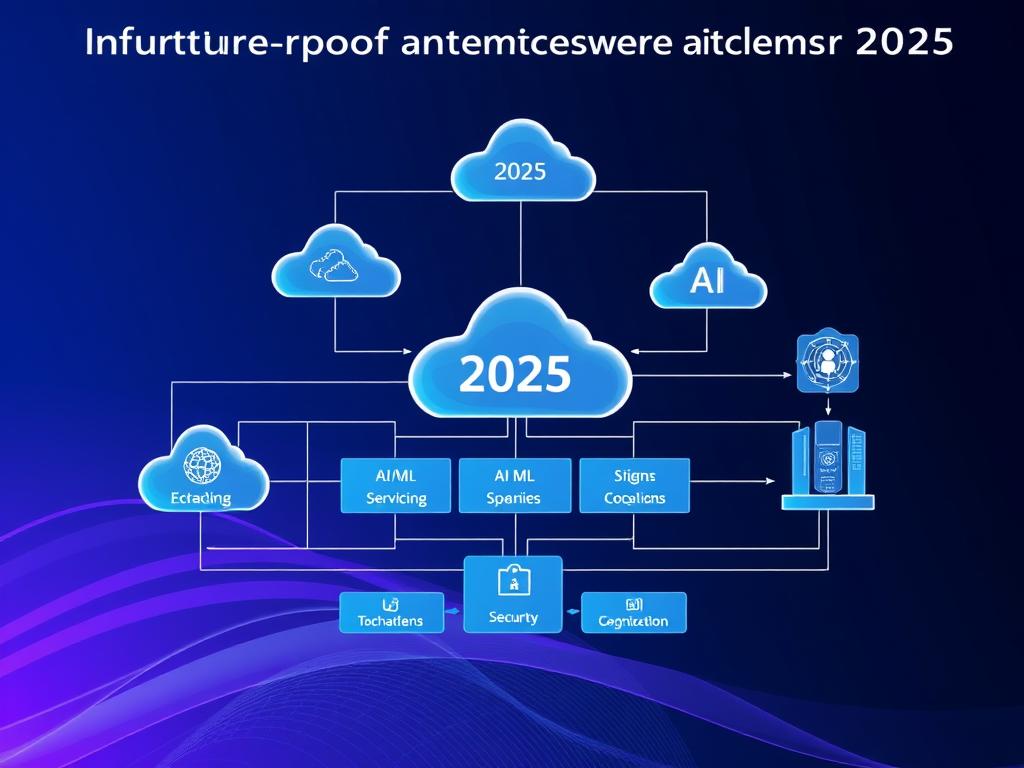
Get Your Complete Industry-Specific Tech Stack Guide
Download our comprehensive whitepaper with detailed implementation roadmaps, ROI calculators, and vendor comparison matrices tailored to your industry.
Schedule Your Personalized Tech Stack Assessment
Our technology experts can help you evaluate your current architecture and develop a customized roadmap for implementing the optimal tech stack for your organization’s specific needs and goals.
Healthcare
Financial Services
Manufacturing
Retail
SaaS/Technology
Other









